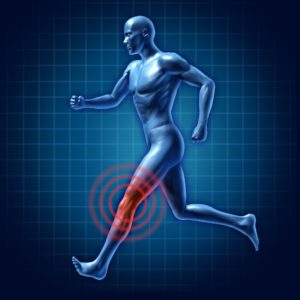The do’s and don’ts of working through injuries
The do’s and don’ts of working through injuries.
By Dr. Robert Cucitrone
Juggling work, errands, exercise, and time with family and friends is a recipe for exhaustion. Sometimes, no matter how careful you are, injuries are bound to happen when your body is exhausted, and no one has the time to let an injury knock them off their feet. But continuing a lifestyle of being constantly on the move when you have an injury is a sure way to create more problems for your health. When it comes to day-to-day activities like going to the gym, you have to learn to find a balance of letting yourself heal without falling behind on your goals.
A vast majority of sports medicine injuries are non-surgical and can be diagnosed and treated by a primary care physician. Your doctor can also help you find the exercise balance that will keep you on track with your goals while allowing your body to heal. Robert Cucitrone, D.C., suggests the following do’s and don’ts when it comes to working through your injuries.
Do: Take time off
For many, the day doesn’t feel complete without getting in a good workout. Stopping your progress to deal with an injury can be frustrating, but you have to keep in mind what is best for your body. If you want to become stronger and healthier in the long run, pushing through an injury will only cause more problems down the road.
Do: Actively focus on recovery
The R.I.C.E. (Rest, Ice, Compression, Elevation) method is the best way to treat minor injuries at home. Aside from taking the time to rest, icing the area is important, and using wraps or braces can add support and help reduce inflammation. The area should be kept elevated above heart level when possible to reduce any swelling. Recovery can also be aided by rolling out the area with a ball or roller to work out adhesions or by visiting your massage therapist or yoga instructor.
Do: Know when to visit your doctor
If you experience severe pain, swelling or numbness, can’t put weight on the area, or a joint feels unstable, seek immediate medical attention. If you’ve worked on recovering a minor injury at home for two to three days and aren’t seeing a reduction in swelling or pain, it’s time to pay a visit to your doctor. If an injury is treated early enough, you’ll get back to your exercise routine in no time, while waiting to evaluate the damage can lead to more serious complications.
Don’t: Rush or try to cover up the healing
Pain is there for a reason, so it’s important to pay attention to it. While pain medications will work to mask the pain, decreased pain should not be mistaken for healing. Pain-killers may allow you to work out with less pain, but will only increase the recovery time of your injury. The fastest way to recover from your injury is by giving it rest and the proper treatments.
Don’t: Exercise only the non-injured side
It may be tempting to continue exercising the parts of your body that are uninjured, but this can cause more severe problems than just uneven strength. If your left hip is injured and you focus on your right side for two months, you’re setting your body up for future issues. This constant unbalanced movement will cause stress on your muscles and could result in additional injuries.
Focusing on recovery should be your top priority when you’re injured. By following these do’s and don’ts when working through an injury, you’ll experience the fastest and longest lasting results. Dealing with an injury can be frustrating, especially when it forces you to put a halt to your fitness goals. Keep in mind that your primary fitness goal is a long healthy life.
Related posts
Leave a Comment
You must be logged in to post a comment.







